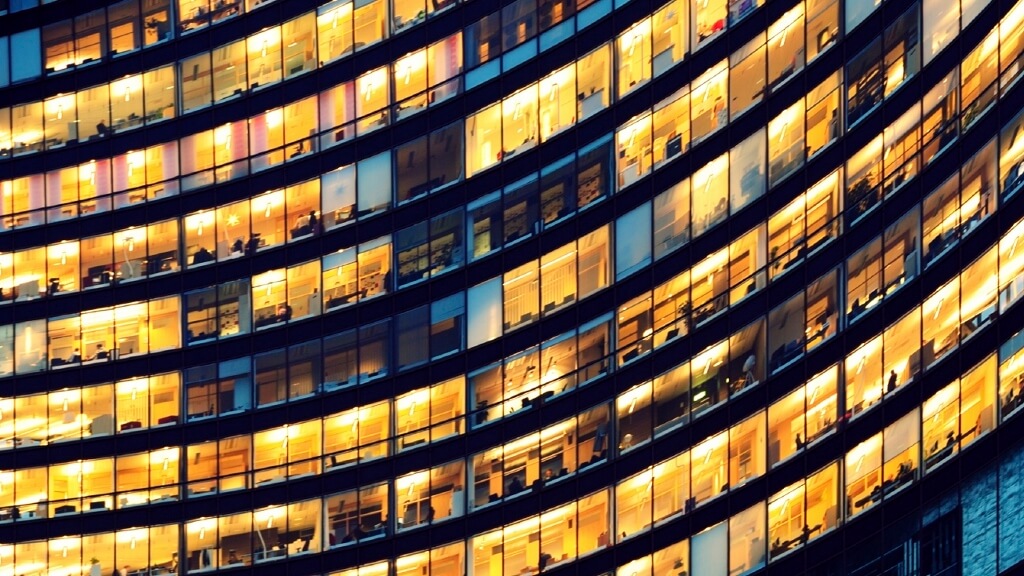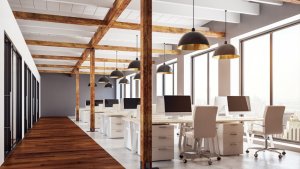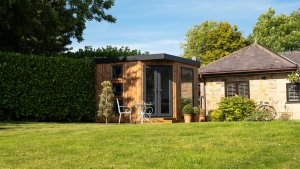Dan Pilling, head of workplace at maber architects, says new ways of thinking are beginning to change the way the world of work looks.
Will We Still Need Offices In 2025?
Dan Pilling, head of workplace at maber architects, says new ways of thinking are beginning to change the way the world of work looks.

Working with National Grid for the past few years on their programme of workplace change opened my eyes to the importance of data and evidence when implementing change – an empirical approach which informed the design process, and which responded to real-time needs, requirements and behaviour of the users.
It was around that time I moved from thinking of myself as a functional designer to someone who designed user experiences.
Approaching workplace design this way has the potential to do much more than focusing solely on bricks and mortar. That is why instead of being brought in to new build projects late in the process, the design of the interior should be considered from day one of the project team coming together.
We provide a divergent perspective – we challenge preconceptions. Architects and contractors implement the built environment fabric, but the interior designer considers the implications of use at the human scale.
While these principles have become better understood, interior design is still widely seen as a bolt-on to architecture, a discipline concerned with carpets, light fittings and wall finishes, its fluffy and superficial image the product of tv personalities and makeover shows.
When I set up the interiors team at another architecture practice eight and a half years ago, I envisioned a service which contributed richness, relevance and innovation to the built environment, and turned interior design into an integral part of the business.
In my current role, we are going further and exploring the future of the world of working space, using our approach to inform projects across education, hospitality and workplace.
That means creating a bridge between design and the commercial property world so that interior design is seen not just as a superficial add-on but something that adds real value within an evidence-based consultancy approach. It means talking the language of the boardroom with compelling visual data and business cases, demonstrating how strategy-aligned interior design can raise productivity instead of being seen as added cost.
Enlightened organisations are now realising that rationalising and optimising space to cram the most people and desks into a space as possible is not the answer. Rather than providing value for money against operational costs, it has recognised negative effects such as compromised acoustics, resulting in work settings that impede rather than enable people’s ability to perform at their best.
So what will the world of work look like in 2025? The current trend towards agile working, activity-based working and a focus on wellbeing, are increasingly effecting the nature of space use and ownership within workplaces.
With the move away from assigned desks, combined with the successful implementation of supporting technology, HR policies and the way people manage teams, potential exists to unlock massive efficiencies in terms of space usage.
The real focus then is on how users experience the workspace and on designers creating places which explore the potential to improve productivity, health and wellbeing at work. Done correctly, instead of a model of “presenteeism” (being at work but not necessarily being productive) people are empowered to work when and where they prefer to perform at their best.
At first sight then, the trend appears to be moving towards the extinction of the office. After all, in an age of increasing hot desking and home working enabled by mobile tech, what is an office for?
In my mind, there are there are three strong reasons why workplaces will continue to be built:
- It’s a social thing, which is good for employees, and when described as interaction and collaboration, good for the employer. Organisational wellbeing is a perfect phrase to capture that notion. For this reason, numerous large companies have banned home working because they found their people simply don’t know each other any more.
- A workplace is the home of the brand. It is interesting to see that Amazon, a company that has operated solely online for 20 years, has just opened its first physical bookstore in its hometown, Seattle. The interior of a workplace has the power to convey complex messages for staff and visitors – and act as a focal point for the culture of an organisation.
- Workplaces will remain but they will not look the same or function as they do now. It is going to be interesting to work with enlightened companies in the next few years, to develop their future vision. The role of informed, empirical design approach becomes increasingly relevant, as organisations become more concerned with getting it right than cramming people in, reconsidering the workplace as a true business enabler rather than a necessary overhead.
Within the architecture and design industry, we have progressed from short term way of thinking, focussing on immediate needs and cost pressures, to exploring what the word sustainable really means. Beyond environmental friendliness, it means considering the life span of the buildings we design and create, making them genuinely fit for purpose, flexible and future proof from the inside out.
At maber, we are trying to understand how we can support clients in the long term and deliver our services to fit their requirements, so we can have long and productive relationships.
As design experts with in-depth building knowledge, we can offer valuable insight at all stages of the lifespan of a building, taking part in cyclical reviews of property assets, and readjusting its performance to align with the shape and size of the organisation – aligning people and property.
Providing these kinds of consultancy services can involve challenging some key assumptions however. For example: “You said that you needed a new building. Let’s run through the reasons why you have arrived at that decision.”
This review might not come out as expected for the client; perhaps the solution is not a new building at all, but a reworking and remodelling of the existing against a new set of criteria.
The big challenge is that cost comes first. Architects are often appointed when the decision makers have already resolved to make some form of saving and deliver a particular kind of project.
Sometimes there are sustainability considerations but almost always cost and business drivers such as rationalisation are top of the list, with personal and organisational wellbeing way down the list because it is seen as intangible and unmeasurable. Therefore it often doesn’t get discussed at board level.
We see this changing. We have developed a toolkit approach to support such organisational change. Meanwhile, specialists in data capture are getting better at mapping supposedly intangible factors such as satisfaction in the workplace both before and after a workplace change. As these things become more demonstrable, the physical workplace is likely to move up the list of priorities.
Forward thinking organisations, often those with younger workforces, are reacting quickest. They realise that the quality of the working environment, working conditions and the way their people and their activities are supported, are important for recruitment and retention as well as productivity.
Wellbeing also applies to the wider organisation as well as individuals: its health and effectiveness are intrinsically linked to its assets – be they property or people.
We want to work with our clients before the property decision is made, to give them board level building knowledge and data to inform their strategic decisions. Retrospectively creating organisational wellbeing is a lot harder to achieve further down the line.
Given the opportunity, designers demonstrate empathy with the users of a building, and ensure we have considered the user at all stages of the process. As a designer, with a high level goal in mind, thinking about the user experience and increased productivity, health, happiness and wellbeing at work, affects the way you design.
For an environment to deliver wellbeing at all levels is quite an achievement, and integral to organisational success. As key contributors to this, the value of interior design needs to be demonstrated and its role better understood within the wider business community.
Thanks for signing up to Minutehack alerts.
Brilliant editorials heading your way soon.
Okay, Thanks!




